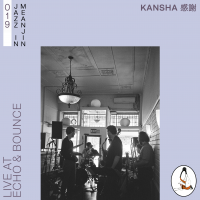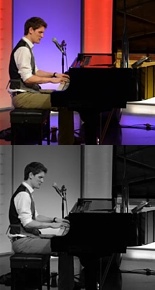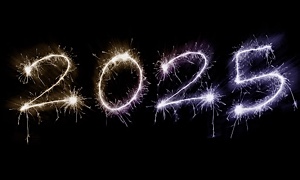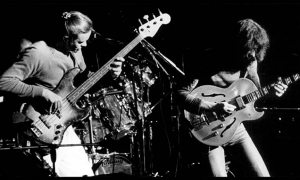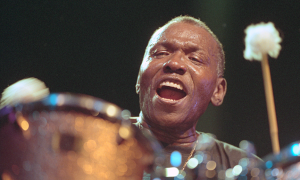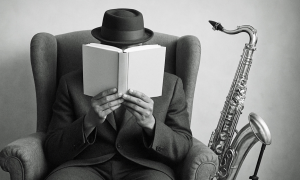Home » Jazz Articles » JazzLife UK » Am I "Jazz People?"
Am I "Jazz People?"

Drummers Chris Dagley, Martin Drew and Jack Parnell and trumpeter and flugelhorn player Harry Beckett all died within a few weeks of each other in late July and early August. Between them, they represent almost every genre of jazz to be found in Britain since the middle of the twentieth century and are a reminder, if one were needed, of the talent to be found in the UK jazz scene.
In a career that began in 1939, Parnell was the drummer with some of Britain's best-known bands, including the Ted Heath Orchestra. He led the house orchestra for Sunday Night At The London Palladium, one of the most popular television shows of the early 1960s; a job that made him a household name in the UK. He also led the Muppet Show orchestra. Such was his love of jazz that, some years after he retired as a professional musician, he would regularly travel from his home in Southwold on the Suffolk coast to play in the resident trio at the Green Man pub in Norfolk—a gig he continued into his early 80s.
Beckett was part of some of the finest cutting-edge combos ever to appear on the UK jazz scene, working with Stan Tracey, Mike Gibbs, Dudu Pukwana and others. He remained an in-demand player in recent years and played at the Barbican concert hall in London in June 2010. Drew worked with Ronnie Scott for some years, becoming the house drummer at Scott's club in the '70s, but is best known as a long-standing member of the Oscar Peterson Trio, which he joined in 1974. Only weeks before his death, he joined top British alto player Peter King's quartet.
 Chris Dagley (pictured right), who died as the result of a motorcycle accident at just 39, was drummer with the National Youth Jazz Orchestra as a teenager, and was the house drummer at Ronnie Scott's Club at the time of his death. In addition, he was an in-demand sideman for jazz and pop artists including Claire Martin, Randy Brecker, Bette Midler and Liza Minnelli. I photographed Dagley three times during the past year—with Martin, with pianist James Pearson, and with tenor saxophonist Bobby Wellins. His drumming style—his head thrown sharply up and to the right as he played—made him visually distinctive and a great subject for a photographer.
Chris Dagley (pictured right), who died as the result of a motorcycle accident at just 39, was drummer with the National Youth Jazz Orchestra as a teenager, and was the house drummer at Ronnie Scott's Club at the time of his death. In addition, he was an in-demand sideman for jazz and pop artists including Claire Martin, Randy Brecker, Bette Midler and Liza Minnelli. I photographed Dagley three times during the past year—with Martin, with pianist James Pearson, and with tenor saxophonist Bobby Wellins. His drumming style—his head thrown sharply up and to the right as he played—made him visually distinctive and a great subject for a photographer. JazzLife July And JazzLife August
Though saddened by the loss of some fine musicians, JazzLife UK was otherwise heartened by events over the summer months of July and August. Odd, because the summer is my least favorite time of year. It is, of course, Outdoor Festival Season. Across the UK musicians and fans migrate to the open fields in the hundreds of thousands, to play and to listen to music in bucolic surroundings. Jazz may not be quite as lemming-like as the rock and pop worlds, but it isn't completely innocent. JazzLife UK doesn't like outdoor festivals for two main reasons: they happen outdoors, in fields; and they attract people in their thousands.
Admittedly, for 10 months of the year the British jazz fan can cheerfully avoid fields and crowds of thousands, so I shouldn't really complain. And the jazz summer brought additional interesting venues, more fascinating music and encouraging signs of a new jazz generation—so it wasn't just fields, rain and overpriced indeterminate "meat" products.
JazzLife UK also has a failure to report. For the first time in this photo-documentary project's eight-month history, my invitation to take part was refused. Well, not refused exactly: the invitation would have been accepted if I had given copyright in the resulting photos to the act's management. In the world of music photography this is known as a Rights Grab—a big no-no. Sadly, this seems to be the standard policy for this act, as Blues and Soul magazine also found. So the JazzLife UK project will not be illuminated by this particular ensemble—a pity, because I love its playing and the way it keeps a certain strand of jazz history alive.
Should I name and shame? I thought about it, but then I decided that the musicians themselves probably had no say in the matter—I've certainly photographed individual members of this band in the past. Not to worry: as a fellow (but far more talented and well-known) photographer said to me, "It's not as if they're famous."
On the slightly negative side, the summer also brought some unsettling periods of introspection as I faced the eternal question: "Am I 'Jazz People'?"
The Venues
At times, the JazzLife UK project seems to resemble an architectural review more than an insightful critique of a contemporary artistic milieu. But such is the variety to be found in British jazz venues that I feel honor-bound to comment. July and August added a Rectory garden and a giant Victorian conservatory to the list.
 James Pearson Trio: James Pearson, Arnie Somogyi, Chris Dagley
James Pearson Trio: James Pearson, Arnie Somogyi, Chris Dagley The garden was at Wavendon Rectory, home of vocalist Dame Cleo Laine who, with her husband Sir John Dankworth has organized concerts in the garden each summer for some years. Although Sir John died earlier this year the concerts took place as usual in this lovely setting. JazzLife UK attended pianist James Pearson's performance on a sunny Sunday afternoon. The first set was a tribute to pianist and comedian Dudley Moore; the second set featured a spirited, if not always note-perfect, quintet arrangement of George Gershwin's "Rhapsody In Blue." It was a lighthearted and happy event. The drummer was Chris Dagley—it was a good gig to remember him by.
The conservatory belongs to Whitlingham Hall in Norfolk, once home to the Colman family of mustard fame, now converted into apartments with family homes in its grounds. The conservatory was the venue for a private concert by the Italian pianist Rossano Sportiello. The prospect of playing an old upright piano in a large, high-ceilinged, glass-walled, edifice might have fazed a lesser talent, but Sportiello delivered a lovely, intimate and entertaining evening.
The venue proved surprisingly suited to jazz: a few happy jazz fans, a selection of large houseplants, some comfy chairs and some well-filled picnic tables helped the conservatory's acoustic qualities no end.
A New Jazz Generation
The new jazz generation appeared in a couple of different guises—as fans and as players—with two events in particular making JazzLife UK's heart leap just a little. The 2010 Yamaha Jazz Scholarships rewarded six of the best new graduates from British jazz degree programs—one graduate from each program—with an award of £1000 each, a chance to record along with more established UK acts for a promotional CD, to be given away with Jazzwise magazine later this year, and a spot at the CD launch party in London's 606 Club. The money will no doubt be a great help to each of these players, but the exposure they will gain from the Scholarship and the CD may well prove even more beneficial in the long run.
This year's Yamaha Jazz Scholars were: tenor saxophonist Lluis Mather; alto saxophonist Andrew Linham; drummer David Hamblett; pianists Dougie Freeman and Chris Gilligan; and Peter Randall, a double-bassist. The presentations took place at the Houses of Parliament, thanks once again to the All Party Parliamentary Jazz Appreciation Group. The guest band for the evening was the Scottish quartet Brass Jaw, whose lineup of three saxophones and a trumpet dispenses with a rhythm section. Brass Jaw creates terrific sounds with its all-horn lineup and also delivers a great performance.
 Brass Jaw: Paul Towndrow, Ryan Quigley, Konrad Wiszniewski, Allon Beauvoisin
Brass Jaw: Paul Towndrow, Ryan Quigley, Konrad Wiszniewski, Allon BeauvoisinThe winning musicians also played at the end of the evening. Their musical skills are undoubted—despite a lack of familiarity with each other, they played well. But they never looked like they were enjoying themselves. Maybe it was nerves, maybe tiredness. Sadly, much of the audience responded by engaging in conversation.
At Snape Maltings I overheard an earnest and well-informed discussion between three audience members about the playing of pianist Neil Cowley, who's Trio was headlining that night's Prom concert. "So, he doesn't play like Django Bates?" asked one of the group. "No," his friend replied, "Django Bates played quite differently when we saw him (Bates had headlined two weeks earlier)." "Is he a bit more like Herbie Hancock?" asked the third fan. "A bit," the second responded: and so it went on as they moved out of earshot. The oldest of this knowledgeable trio was about 15 years old, the youngest no more than 11 or 12.
Jazz: To Perform or Not to Perform
The audience for live jazz, as people far more insightful than me have said, needs nurturing. But much of this potential audience has some expectations that the jazz musician doesn't always meet and, as a result, it's there to be lost. Contemporary audiences for live music expect a show—but they don't always get one at a jazz gig. This is not about pyrotechnics, a cast of 50 dancers on stilts, flying elephants or revolving models of Mount Everest, it's about the people on stage recognizing that the people in the crowd have spent money and devoted time to come and listen. It's about those on stage actually acknowledging that there is an audience out there in the gloom.
So, wandering onstage in clothes that appear to have been slept in is not a show, mumbling "Hello" as you begin and "Cheers" as you end the evening with a brief mid-set attempt at introducing the rest of the band is not a show, sharing in-jokes with mates in the front row while 99% of the audience twiddles its thumbs is not a show, five minute band discussions about how the next tune should start, after a five-minute discussion about what the next tune should be, is not a show, and neither is a series of seemingly interminable rants about a member of the keyboard player's family. And yet I have had the dubious pleasure of witnessing every one of these events at jazz gigs during 2010.
"Ah, but it's all about the music" cry the true jazz aficionados. That may be true for a dedicated, but small, section of the audience but for most people it isn't. For most people it's about a good night out, something to remember, something that was worth the price of admission—even going to a free gig costs time.
 So, congratulations to those musicians who do deliver a performance rather than just playing the notes: musicians such as the Neil Cowley Trio, Brass Jaw and especially Courtney Pine (Pictured left).
So, congratulations to those musicians who do deliver a performance rather than just playing the notes: musicians such as the Neil Cowley Trio, Brass Jaw and especially Courtney Pine (Pictured left).Pine's concert as part of the Snape Proms was an object lesson in how to deliver—energetic, talented, engaging, Pine even persuaded the 830-strong audience to set a record for jumping up and down (we managed 200 jumps without stopping, apparently). There's a rumor that Keith Jarrett will be attempting to get his audiences to break that record on his next tour.
Am I "Jazz People"?
Maybe jazz musicians don't want to play for most people: perhaps they only want to play for Jazz People. So am I "Jazz People"?
I'm sure that the concept of "Jazz People" isn't new, but the first time it really stuck in my mind was when I heard Kurt Elling use it at the end of "It's Easy to Remember," on Dedicated To You (Concord Music Group, 2009). The singer tells the story of John Coltrane and Johnny Hartman, and concludes with: "We remember them both, we're jazz people and for us it's easy."
Elling's line gave me my first problem, because I only remember one of them. I never heard Hartman sing until 2010, when I sought out his collaboration with Coltrane to compare it to Elling's work. And who are the "we" that Elling talks about? His band? The audience? A collective consciousness? Is there a secret handshake I am not privy to? Will Dan Brown explain all in his next novel? If I don't remember Coltrane and Hartman does that mean, by default, that I can't be "Jazz People," even if I can remember every musician in Buddy Bolden's first band, or every solo ever recorded by John Zorn?
I have other problems, too: I don't live in a major metropolitan conurbation; I didn't spend the '60s down at Ronnie Scott's; I prefer to stand rather than sit at gigs (it's easier to boogie from a standing position); I continue to consolidate my policy of only applauding a solo if I have actually enjoyed it. And I don't go out late (don't care to go, I'm home about 8).
And, however much I love the music, I find it difficult to take it, or any other art, too seriously. So am I "Jazz People?" I guess I need to think about it a bit more.
Photo Credit
All Photos: Bruce Lindsay
Tags
JazzLife UK
Bruce Lindsay
United Kingdom
Martin Drew
Jack Parnell
Harry Beckett
Stan Tracey
Mike Gibbs
Dudu Pukwana
Ronnie Scott
oscar peterson
Pete King
claire martin
randy brecker
Liza Minnelli
James Pearson
Bobby Wellins
Cleo Laine
John Dankworth
Dudley Moore
George Gershwin
Rossano Sportiello
Brass Jaw
Neil Cowley
Django Bates
Herbie Hancock
Courtney Pine
Keith Jarrett
Kurt Elling
John Coltrane
Johnny Hartman
Buddy Bolden
john zorn
PREVIOUS / NEXT
Support All About Jazz
 All About Jazz has been a pillar of jazz since 1995, championing it as an art form and, more importantly, supporting the musicians who make it. Our enduring commitment has made "AAJ" one of the most culturally important websites of its kind, read by hundreds of thousands of fans, musicians and industry figures every month.
All About Jazz has been a pillar of jazz since 1995, championing it as an art form and, more importantly, supporting the musicians who make it. Our enduring commitment has made "AAJ" one of the most culturally important websites of its kind, read by hundreds of thousands of fans, musicians and industry figures every month.











